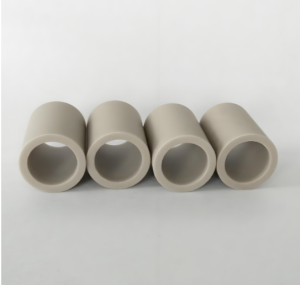Discover Premium Ceramic Products | Durability & Elegance United | Advanced Ceramics
**Ceramic Cookware Unmasked: Friend or Foe in Your Kitchen?**
(Is Ceramic Cookware Safe? Health Benefits and Risks Explored)
Let’s talk about ceramic pots and pans. They’re pretty. They’re trendy. But are they safe? People love their colorful finishes and promises of non-toxic cooking. The truth is, ceramic cookware sits in a tricky spot between health hero and hidden hazard. Time to dig into the details.
Ceramic cookware comes in two types. One is pure clay ceramic, like old-school terracotta. The other is metal pans coated with ceramic layers. Both claim to be safer than traditional non-stick options. The big sell? No nasty chemicals like PFOA or PTFE, which some studies link to health issues. Sounds great, right? Maybe. But not all that glitters is food-safe.
Start with pure ceramic cookware. Made from natural clay and minerals, it’s been around for centuries. No synthetic coatings. No chemical leaching. Heat it, and it stays inert. That means it won’t react with acidic foods like tomatoes or citrus. Metal pans can sometimes add a metallic taste or even tiny particles to your meal. Ceramic avoids this. Plus, it’s naturally non-stick if seasoned properly.
Now, the shiny ceramic-coated pans. These are usually aluminum cores dipped in silica-based coatings. Companies call this “ceramic,” but it’s not the same as grandma’s clay pot. The coating is slick, scratch-resistant, and free of PFAS chemicals. Good news? Yes. But there’s a catch. That ceramic layer can wear off over time. Once the metal underneath peeks through, you risk aluminum mixing into your food. High heat speeds up this process. Ever seen a ceramic pan go from sleek to speckled? That’s the coating breaking down.
Health perks exist. Pure ceramic cookware doesn’t leach heavy metals or chemicals. It’s ideal for slow-cooking stews or baking bread. Ceramic-coated pans offer a safer alternative to traditional non-stick options, at least while the coating holds. Both types are easy to clean and need less oil, which appeals to health-conscious cooks.
Risks lurk, though. Cheap ceramic-coated pans might contain trace lead or cadmium in their glazes. These toxins can seep into food, especially with acidic recipes. Always check for third-party safety certifications. Another issue? Durability. Ceramic coatings chip easier than seasoned cast iron or stainless steel. A scratched pan isn’t just ugly—it’s a breeding ground for bacteria and a gateway for metal exposure.
Temperature matters. Ceramic handles low to medium heat well. Crank the stove to high, and you risk damaging both pure and coated ceramics. Thermal shock—like moving a hot pot to a cold surface—can crack pure ceramic. Coated pans warp or lose their finish.
What’s the verdict? Pure ceramic is a safe bet if you avoid extreme heat and handle it gently. Ceramic-coated pans work short-term but demand careful use. Ditch metal utensils. Skip the dishwasher. Replace them once the coating wears thin.
Still unsure? Test your pans. Rub a paper towel over the surface. See color residue? That glaze might be degrading. Notice scratches? Time for a new pan. Your health isn’t worth the savings.
(Is Ceramic Cookware Safe? Health Benefits and Risks Explored)
At the end of the day, ceramic cookware isn’t perfect. It’s safer than many options, but only if you use it right. Choose quality brands. Follow care instructions. Keep an eye on wear and tear. Your kitchen deserves tools that look good and do good—without hidden dangers.



